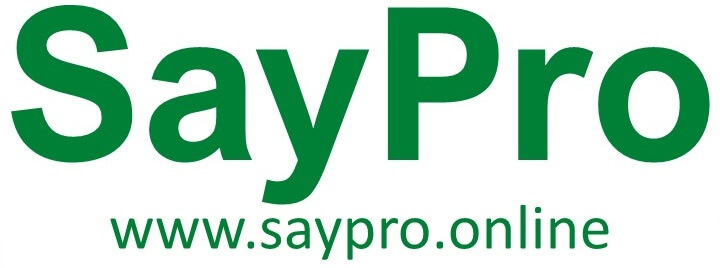Your basket is currently empty!
Click Here: [Contact SayPro] [Recruit] [Agri] [Login] [Courses] [Training Material] [Jobs] [ListBusiness/NPO/Govt] [Services] [Shop] [Volunteer] [Internships] [Learnerships] [Donate] [Give] [Sell] [Camps] [Events&Catering] [Research] [Laboratory] [Career Guidance] [Machines] [Apply] [Partner] [Corporate Training] [Sponsor] [Study] [Sell Courses] [About SayPro] [Advertise] [Influencers] [Publish] [Write ] [Invest ] [Franchise] [Staff] [CharityNPO] [Freelancers] [School] [Clinic/Hospital] [Competitions] [Travel]
SayPro Table of Contents
ToggleSAQA offers qualifications and unit standards for End User Computing to equip learners with essential computer skills that are widely applicable across various industries. The qualification typically associated with this is the National Certificate: End User Computing, which focuses on foundational computer literacy and competency in using various software applications.

Basic Literacy and Numeracy: Learners should possess fundamental skills in reading, writing, and mathematics, typically equivalent to NQF Level 2. This is to ensure they can comprehend course material and perform basic calculations required for computer operations.
Communication Skills: Proficiency in the language of instruction (usually English) is essential. This includes reading comprehension, writing skills, and basic communication, which are crucial for understanding instructions and engaging with course content.
Access to a Computer: Since this is a practical, hands-on qualification, learners need access to a computer or laptop with appropriate software installed (such as Microsoft Office Suite and internet access) to complete assignments, exercises, and assessments.
Recognition of Prior Learning (RPL): Learners who have prior knowledge, experience, or previous qualifications related to End User Computing may apply for recognition of prior learning. This process involves an assessment to determine if their prior learning meets some of the outcomes of this qualification.
Completion of Core Unit Standards: Learners must complete all core unit standards that cover essential end-user computing skills like word processing, spreadsheets, databases, presentations, internet use, and communication tools.
Completion of Fundamental Unit Standards: These are focused on essential skills such as communication, language, and mathematical literacy, which are foundational for understanding computer-related concepts and operations.
Completion of Elective Unit Standards: Depending on the training provider, learners can select elective unit standards that align with specific interests or job requirements, such as advanced spreadsheet functions, graphic design software, or database management.
Assessment and Certification: Learners will be assessed through practical assignments, projects, and written tests to demonstrate their competence in various aspects of end-user computing. Successful completion of all assessments will lead to certification.
Entry-Level Job Seekers:
Current Employees Seeking Upskilling:
Small Business Owners and Entrepreneurs:
Students and Recent Graduates:
Older Adults and Non-Traditional Learners:
Community Members and Non-Profit Organizations:
Individuals Pursuing Further Studies in IT or Business:






































c
SayPro based is founded based on Matthew 16 Verse 8. Learn more
